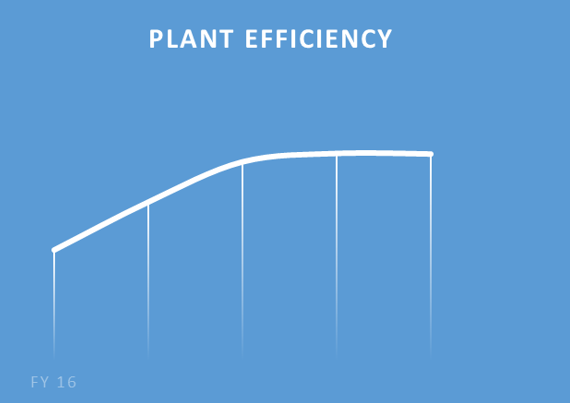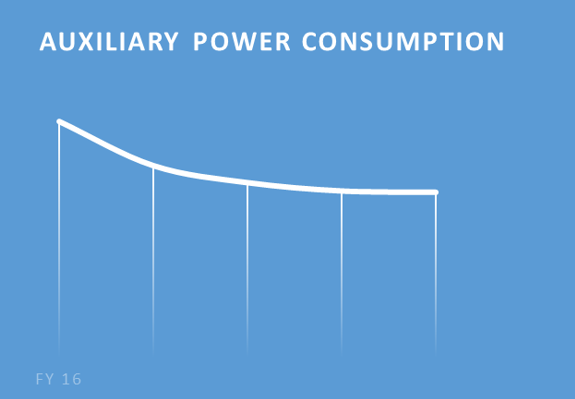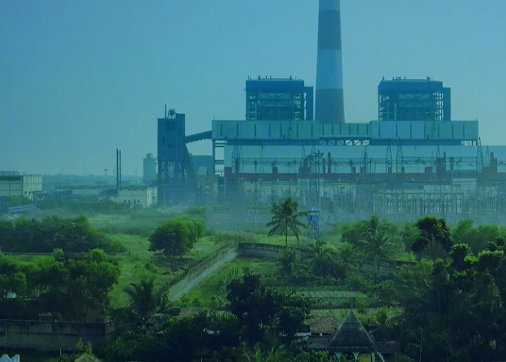The energy sector is a key contributor to climate change, accounting for more than two-thirds of global greenhouse gas emissions. Coal fired power plants are one of the major sources of emission of Carbon Dioxide, which is a Green House Gas(GHG) contributing to Green House Effect and subsequent global warming. HEL is always striving hard to generate electricity with optimum use of fossil fuel & reduction in Green House Gases.Several efficiency improvement projects have been implemented over the years to gradually improve efficiency and thereby reducing carbon footprint.

Improving Operational Efficiency
Process cycle efficiency improvement is the driving factor behind the operational activities at HEL which in turn contributes to low carbon emission. The reduction of thermal wastages plays a major role in the process of operational practice improvements. Optimization of fuel required per unit of power generated is one of the key focus areas of the plant. Operational efficiency is maintained at the highest possible by efficient process controls in various stages of production. This includes efficient combustion of coal at the boiler, minimization of heat loss through steam leakages, ‘All Volatile Treatment’ for reduction of blowdown of hot boiler water, maintaining cooling efficiency of condenser & feedwater heaters etc.
A data-driven model for real-time efficiency monitoring in DCS provides a guidance platform for operation engineers in their efforts to minimize process losses.

Increased Energy Efficiency
Minimizing Auxiliary Power Consumption is another way to increase system efficiency and also contributes to lowering the carbon footprint which is an essential step towards Climate Change Mitigation process. Since its commissioning in 2015, Auxiliary Power (energy used per unit of power generated) consumption has been brought down significantly. HEL is a forerunner in the field of implementing best practices, continuous energy monitoring, innovative process modifications, absorption of new technology and projects which have helped in setting new benchmarks in Auxiliary Power Consumption.

Green Energy
It is now largely recognized that addressing energy use in buildings can reduce total fossil fuel consumption and associated GHG emissions. The existing administrative building has been converted to a Platinum-rated IGBC certified green building. Energy-efficient appliances and other fixtures in the building could save water and energy to the tune of 35% to 40%. The rooftop solar plant (30 KWp) supplies around 17% of the total energy demand of the administrative building. Not only does it produce much-needed green power for the building, it also reduces rooftop solar heat load which saves air conditioning energy requirement.
HEL has also has a battery operated vehicle for material transportation within the plant area.

Plantation & Green Belt
As trees grow, they help address climate change issues by removing carbon dioxide from the air and releasing oxygen. In one year, a mature tree absorbs more than 21 Kg of carbon dioxide from the atmosphere and releases oxygen in exchange. Green vegetation cover is also beneficial in many ways leading to conservation of biodiversity, retention of soil moisture, recharge of groundwater, and maintaining a pleasant climate of the area and providing possible habitats for birds and animals. Haldia Energy Limited has already planted more than one lakh trees covering 33% of the plant area and the green coverage is increasing every year.

Reduction in use of paper
A simple way to have a significant impact on the environment is by reducing paper consumption by turning paper documents into electronic ones and eliminating paper from official workflows. By reducing paper usage, companies can have a direct impact on reducing their carbon footprint. Haldia Energy Limited promotes paperless information flow through increased use of e-documents to the extent possible.